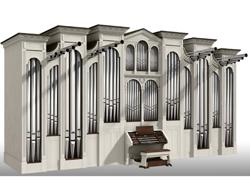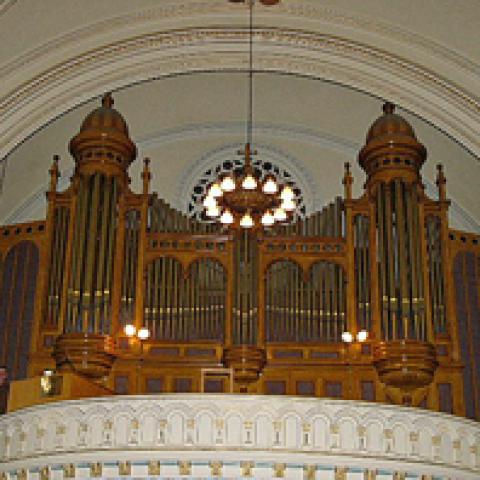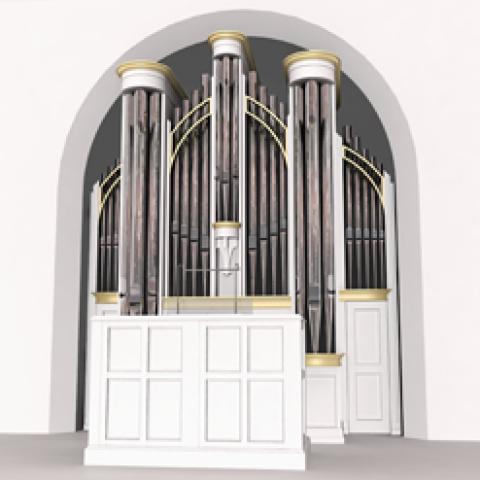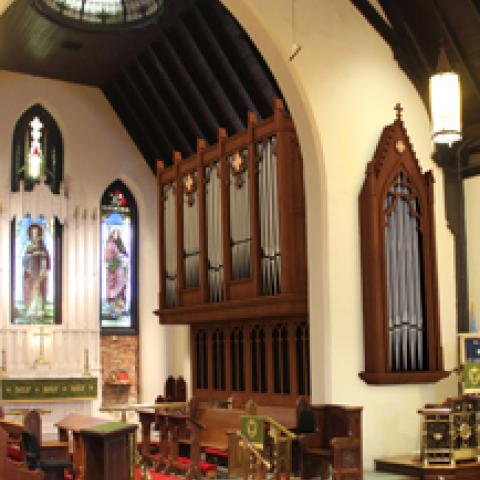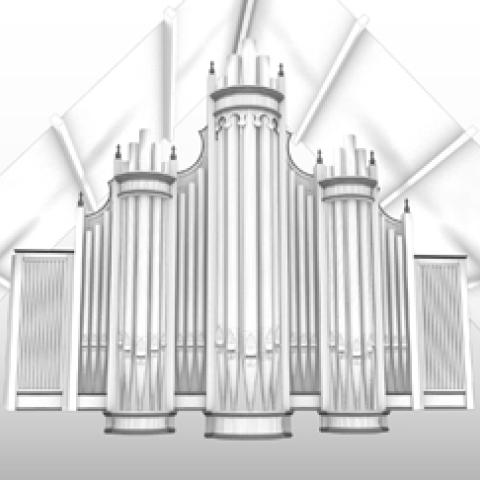Orgues Létourneau Limitée, Saint-Hyacinthe, Québec, Canada, Opus 93
The Abbey of Gethsemani, Trappist, Kentucky
With roots tracing back to the 11th century Cistercian monks in France, the Abbey of Gethsemani was first established in Trappist, Kentucky in 1848. Today, the abbey is a vibrant and thriving community with 65 monks, hosting retreats year-round and supporting their work by mail-order and Internet sales of homemade fruitcakes, cheeses and bourbon fudge. Divine worship continues to be the foundation of the Trappist community and their activities, with the cycle of seven prayer services observed daily.
When confronted with the need to replace their previous pipe organ, the monks embarked on an exhaustive process to choose an organ builder. While a fine tonal result was an obvious priority, equal importance was placed on commissioning a mechanical-action instrument that was both comfortable to play and built to the highest standard of quality.
The end result of their search is the 29-rank instrument pictured here. The instrument’s simple casework is made from solid red oak and was designed to complement the abbey’s unadorned architecture. The façade displays pipes from the 16' Montre stop, made from 70% polished tin. Completed in December 2003, the organ serves daily, accompanying the abbey’s services, and was dedicated in a series of recitals by Philip T. Hines, Jr. and W. Dudley Oakes.
The organ’s console en fenêtre has bone and ebony keyboards and offers mechanical key action. The stop action is electric and boasts a 16-level piston capture system by Solid State Organ Systems of Alexandria, Virginia.
—Andrew Forrest
Orgues Létourneau Limitée
Saint-Hyacinthe, Québec
GRAND-ORGUE
16' Montre
8' Montre
8' Flûte à cheminée
8' Salicional
4' Prestant
4' Flûte conique
22?3' Nazard
2' Doublette
13?5' Tierce
11?3' Fourniture IV–VI
8' Trompette
Tremblant
Récit au Grand-Orgue
RÉCIT EXPRESSIF
8' Viole de gambe
8' Voix céleste
8' Bourdon
4' Prestant
4' Flûte à fuseau
2' Doublette
22?3' Cornet III
8' Hautbois
Tremblant
PÉDALE
16' Montre (G-O)
16' Soubasse
8' Prestant
8' Bourdon
4' Basse de chorale
16' Bombarde
8' Trompette
Grand-Orgue à la Pédale
Récit à la Pédale
Bedient Pipe Organ Company, Roca, Nebraska
Opus 71, Amistad Chapel, United Church of Christ Church House, Cleveland, Ohio
Opus 71, a Phoenix model from our Legacy Line, is a modest instrument with grand tonal possibilities. It is designed to lead liturgy, hymn singing and to play a significant amount of organ literature.
Eighteenth- and 19th-century organs of France and Germany inspire the design of the organ.
The organ case is constructed of Honduras mahogany and includes decorative pipe shades of iroko wood. The twenty-three pipes in the façade are speaking pipes and part of the Principal 8' stop. Their mouths are gilded with 23-karat gold leaf. The keyboard naturals are covered with blackwood, and the accidentals are of white maple. The pedal keys are made of oak, and the accidentals are capped with moradillo.
The fourteen sets of pipes in the organ produce twelve individual stops and total 807 pipes. The custom-designed iroko wood pipe shades incorporate maritime elements reflecting African captives’ revolt during transport to the United States on the slave ship, Amistad.
—Gene Bedient
GREAT
8' Principal (tc)
4' Octave
2' Octave
II Sesquialtera
II–III Mixture
SWELL (enclosed)
8' Salicional
8' Gedackt
4' Spitzflute
2' Flute
8' Trumpet Treble
8' Cromorne Bass
PEDAL
16' Subbass
8' Flute
Couplers
Great/Pedal
Swell/Pedal
Swell/Great
Tremulant
